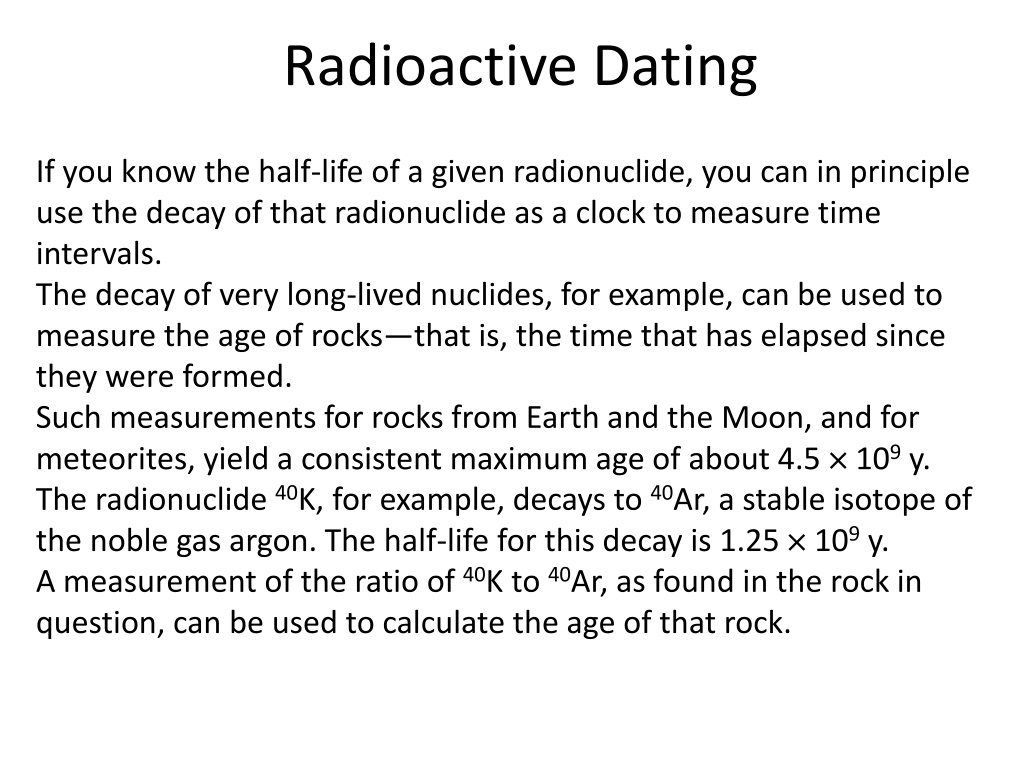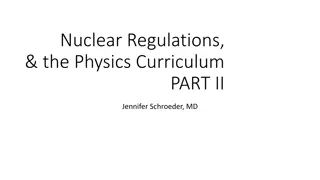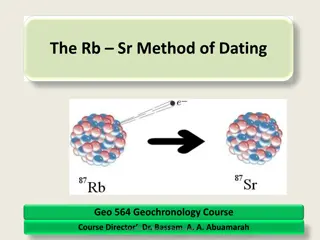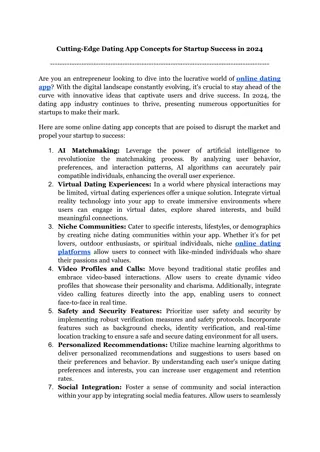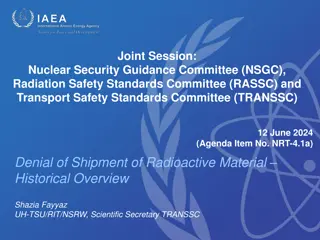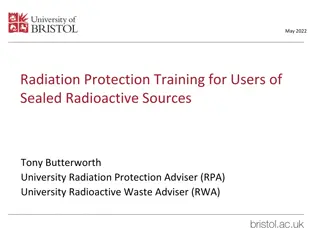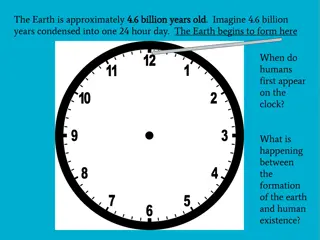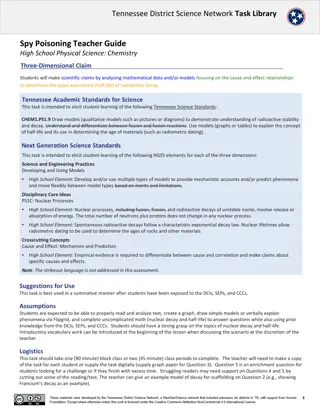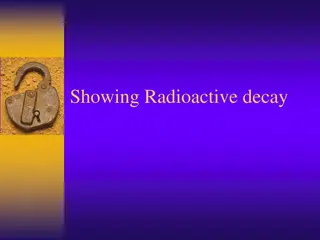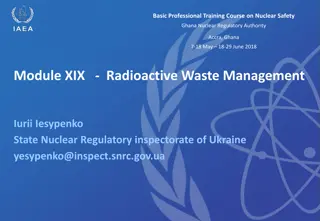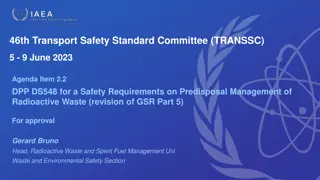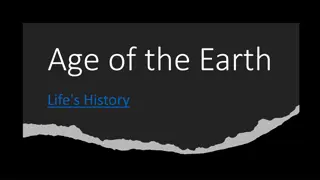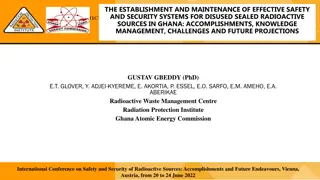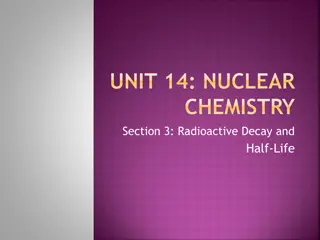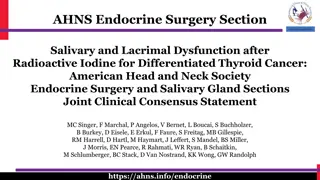Understanding Radioactive Dating Methods
The process of radioactive dating involves utilizing the decay of radionuclides to measure time intervals, with applications in determining the age of rocks and artifacts. Techniques such as radiocarbon dating, based on isotopes like 14C, enable scientists to determine the age of organic materials by analyzing the decay rate. By understanding half-lives and ratios of isotopes, researchers can unlock the mysteries of Earth's history and the passage of time.
Download Presentation

Please find below an Image/Link to download the presentation.
The content on the website is provided AS IS for your information and personal use only. It may not be sold, licensed, or shared on other websites without obtaining consent from the author. Download presentation by click this link. If you encounter any issues during the download, it is possible that the publisher has removed the file from their server.
E N D
Presentation Transcript
Radioactive Dating If you know the half-life of a given radionuclide, you can in principle use the decay of that radionuclide as a clock to measure time intervals. The decay of very long-lived nuclides, for example, can be used to measure the age of rocks that is, the time that has elapsed since they were formed. Such measurements for rocks from Earth and the Moon, and for meteorites, yield a consistent maximum age of about 4.5 109 y. The radionuclide 40K, for example, decays to 40Ar, a stable isotope of the noble gas argon. The half-life for this decay is 1.25 109 y. A measurement of the ratio of 40K to 40Ar, as found in the rock in question, can be used to calculate the age of that rock.
Radioactive dating of a moon rock In a Moon rock sample, the ratio of the number of (stable) 40Ar atoms present to the number of (radioactive) 40K atoms is 10.3. Assume that all the argon atoms were produced by the decay of potassium atoms, with a half-life of 1.25 109 y. How old is the rock?
Radiocarbon Dating https://www.youtube.com/watch?v=Kcuz1JiMk9k For measuring shorter time intervals, in the range of historical interest, radiocarbon dating has proved invaluable. The radionuclide 14C (with T1/2 = 5730 y) is produced at a constant rate in the upper atmosphere as atmospheric nitrogen is bombarded by cosmic rays. This radiocarbon mixes with the carbon that is normally present in the atmosphere (as CO2) so that there is about one atom of 14C for every 1013 atoms of ordinary stable 12C. Through biological activity such as photosynthesis and breathing, the atoms of atmospheric carbon trade places randomly, one atom at a time, with the atoms of carbon in every living thing, including broccoli, mushrooms, penguins, and humans. Eventually an exchange equilibrium is reached at which the carbon atoms of every living thing contain a fixed small fraction of the radioactive nuclide 14C. This equilibrium persists as long as the organism is alive. When the organism dies, the exchange with the atmosphere stops and the amount of radiocarbon trapped in the organism, since it is no longer being replenished, dwindles away with a half-life of 5730 y. By measuring the amount of radiocarbon per gram of organic matter, it is possible to measure the time that has elapsed since the organism died.
A 5.00 g charcoal sample from an ancient fire pit has a 14C activity of 63.0 disintegrations/min. A living tree has a 14C activity of 15.3 disintegrations/min per 1.00 g. The half-life of 14C is 5730 y How old is the charcoal sample?
